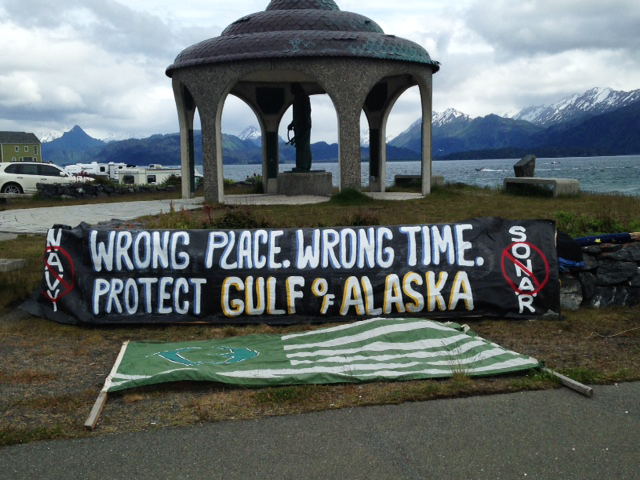Today the US Navy plans to unleash [3] 6,000 sailors, soldiers, airmen, Marines and Coast Guard members along with three Navy Destroyers, 200 aircrafts, untold weaponry, and a submarine to converge in war games in the Gulf of Alaska. The training exercises are scheduled to continue through June 26.
The Navy’s choice of the Gulf of Alaska – one of the most pristine places left on Earth, and at the peak of migration and breeding periods of marine life – has left locals baffled and upset.
In the last month, protests have been held in Cordova, Kodiak, and Homer, Alaska. Emily Stolarcyk, a program manager with the Eyak Preservation Council, an environmental and social change organization based in Cordova, says local communities have never before united in such a way, pointing to the 100-plus fishing vessels that joined the protest against the Navy.
RELATED: Over 180,000 Marine Mammals May Die in Navy’s Arctic War Games [5]
“It was incredible to see the commercial fleet turnout and unite like that with tons of support from people on shore as well,” she says.
Regional tribal villages have also been vocal in their opposition, worried that the Navy’s trainings could affect their subsistence foods. Several tribes have passed resolutions opposing the trainings and others are requesting formal government-to-government consultations regarding the plans. Local people are also concerned about the possible impacts on marine life.
According to Stolarcyk, the Navy has not been receptive to these concerns. “The Navy is refusing to negotiate at all with local communities,” she says.
The Navy has conducted Northern Edge training exercises in Alaska every two years since 1994. In 2011, the Navy expanded the scope of their training exercises and the use of the highly controversial low-frequency active sonar was authorized for the first time. The 2013 training was cancelled due to the federal government’s budget crisis.

